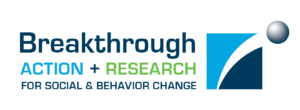About This Interactive Site
This interactive site presents four indicators related to the use of insecticide-treated nets (ITNs): individual access to ITN within the household, individual use of ITN the previous night, household ownership of at least one ITN, and the use:access ratio. All indicators were calculated to reflect indicators accessed from publicly available reports such as Demographic and Health Surveys, Malaria Indicator Surveys, and Multiple Indicator Cluster Surveys available on the MalariaSurveys.org website. Author and institutional attributions for all data can be found on individual survey reports.
To explain the variations in access and use, data for each country was stratified by region, urban/rural status, and wealth quintile. Indicators are uploaded when new survey results are released.
To better understand the ITN access indicators, watch this helpful DHS Program video in English and French.
From the main navigation page, click on a country to go to the country page, which includes all national data for the four indicators mentioned above; use:access ratio country heat map; stratified use by gender, age, wealth quintile, and residence; seasonality and net use; implications for programming; and full indicators that can be downloaded.
All data can be downloaded by clicking on the “download data” button at the bottom of the charts and tables. To download maps, right-click and select “save image as.”
Brief observations and programmatic recommendations are made for each country.
A Stata do-file is included in Methods.
Background
National results for ownership, access, use, and the use:access ratio have been described in Koenker et al previously in detail [1]. However, national results conceal variations by region, which may result from differences in survey timing vis à vis rainy season (among other reasons). Variations in other subgroups such as wealth quintile or urban/rural residence may offer ways to identify target groups that do not use their available nets to the fullest degree.
Definitions
- Ownership: proportion of households that own at least one ITN. Ownership indicator provides an estimate of the minimum threshold for ITN coverage—if the household has at least one. However, ownership does not take into account whether the household has enough nets for all family members.
- Access: proportion of the population with access to an ITN within their household. Also called “population access” or “ITN access”. This indicator is calculated based on the number of ITNs in the household and the number of household members. Over a large sample, it calculates the proportion of people who should have (in principle, based on the assumption that one ITN can be used by two people in the household) an ITN to sleep under. It cannot be calculated on an individual basis.
- Use: proportion of the population that slept under an ITN the night before the survey. Also called “population use” to distinguish it from use of ITNs by children under five or pregnant women.
- Use:access ratio: result when dividing use by access (i.e., use/access). Gives an estimate of the proportion of the population using nets, among those that have access to one within their household. As it is a ratio, it is not technically a percentage, although it can be interpreted as such. This indicator provides data on the behavioral gap for net use rather than a gap because not enough nets are available.
- DHS
- IRS
- ITN
- LLIN
- MARA
- MICS
- MIS
- PMI
- Demographic and Health Survey
- Indoor Residual Spraying
- Insecticide-treated net
- Long-lasting insecticidal net
- Mapping Malaria Risk for Africa
- Multiple Indicator Cluster Survey
- Malaria Indicator Survey
- U.S. President’s Malaria Initiative
[1] Koenker H, Kilian A (2014) Recalculating the Net Use Gap: A Multi-Country Comparison of ITN Use versus ITN Access. PLoS ONE 9(5): e97496. doi: 10.1371/journal.pone.0097496



